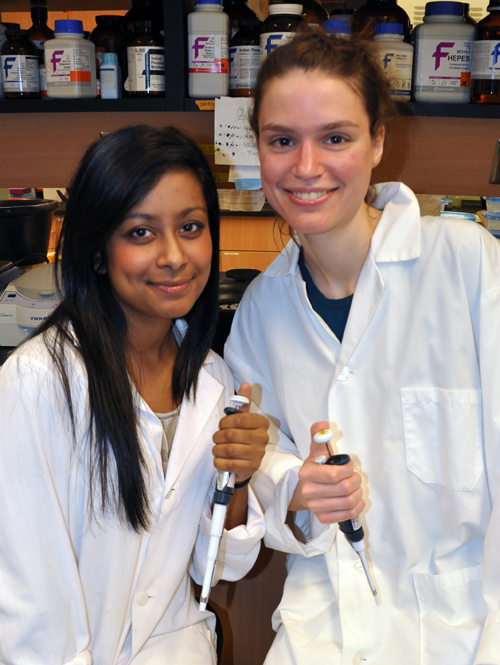
Athletic activity is supposed to be good for the heart, but for people who are genetically predisposed to certain heart conditions, strenuous physical exertion could be deadly. Incidents of high school athletes collapsing on the field due to heart failure are rare, yet some schools in the United States are requiring their athletes to undergo electrocardiograms before they step onto the field. New Guelph research suggests these sudden deaths may be preventable with genetic screening that detects the molecular mutations responsible for the underlying condition.
The causes of heart failure are complex and depend on a number of factors, including genetics, says Prof. John Dawson, Department of Molecular and Cellular Biology. To better understand these factors, researchers in his laboratory are looking at the underlying molecular mechanisms to find out why young, seemingly healthy athletes can die unexpectedly.
At the molecular level, proteins bind together to produce muscle contractions. “Actin is a very important protein in the cell,” says lab technician Ana Loncar, M.Sc. ’09. “It’s involved in a lot of cellular processes such as muscle contraction.”
Found in all types of organisms, from yeast to insects to humans, actin provides structural support to the cell, and also plays a role in cell division and movement.
Actin is a globular protein shaped like a round bead. Strings of beads form filaments, known as F-actin, which consist of two strings wound around each other. “With F-actin, we want to understand, at an atomic level, the interactions between the actin (molecules) themselves as well as the interactions between F-actin and actin-binding proteins,” says Loncar.
Actin interacts with the actin-binding protein myosin to produce muscle contraction and relaxation. Myosin attaches to the binding sites on the actin chain, moving it along like a conveyor belt.
If there’s a mutation in the actin molecule, the proteins may not be able to bind together properly, which can lead to heart problems like hypertrophic cardiomyopathy (HCM), a condition that affects one in 500 people, and dilated cardiomyopathy (DCM).
In people with HCM, a thickened ventricular wall reduces the size of the left ventricle, inhibiting its ability to pump enough blood into the body.
The third leading cause of heart failure, DCM is characterized by abnormally thin ventricular walls caused by a lack of myofibers, which are made of actin, myosin and other proteins involved in muscle contraction. The heart becomes too weak to pump efficiently.
“At some point, the heart just can’t compensate for the genetic deficiencies,” says master’s student Marissa Dahari, adding that nine mutations in the actin protein have been linked to HCM and DCM. “One or two mutations can be pretty detrimental.”
Proteins are made of chains of amino acids, and if one of the amino acids is substituted for another, it can affect the protein’s ability to do its job, such as bind with other proteins. “Each amino acid has its own polarity and structure,” says Dahari. “When you swap one for another, this can affect the folding of the protein, its ability to bind to other proteins and its stability in vivo.”
When an amino acid with a negative charge is in a location where a positively charged amino acid should be, it could result in decreased affinity for the protein it’s supposed to bind to.
“You have deficient myosin binding, then you have deficient contraction, then you have a deficient heart,” says Dahari, explaining the chain reaction that occurs when proteins malfunction.
As part of her research, which is funded by the Heart and Stroke Foundation, she is producing mutant actin proteins in the lab to see how they behave. “These mutations can put you at risk for decreased systolic function,” says Dahari. “People can be screened ahead of time and know what the risk factor is.”